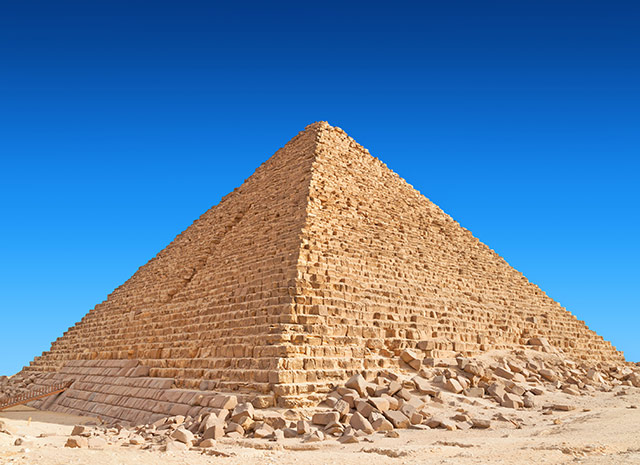Revolutionary radar scans reveal massive underground network beneath Giza Pyramids, challenging h...

Unveiling the Secrets Beneath the Sands: A Revolutionary Look at the Giza Pyramids
A Subterranean Labyrinth Unveiled
The majestic Pyramids of Giza, shrouded in centuries of mystery, have yielded a stunning secret. Groundbreaking radar scans have revealed a vast, intricate network of underground structures, challenging conventional theories about their purpose and hinting at a level of ancient engineering far beyond what we previously imagined.
Utilizing cutting-edge Synthetic Aperture Radar (SAR) and Doppler Tomography, an international team of researchers discovered eight cylindrical formations plunging over 600 meters beneath the Pyramid of Khafre. These formations, connected by spiraling pathways, converge into two colossal chambers, each measuring approximately 80 meters per side. This subterranean network stretches over two kilometers, linking the Pyramids of Khufu and Menkaure in a design that defies traditional explanations.
Challenging the Established Narrative
The prevailing view of the pyramids as simple pharaonic tombs built with rudimentary tools around 2500 BCE is now being questioned. The complexity of this recently uncovered underground network points to a much more sophisticated understanding of engineering, potentially predating known Egyptian dynasties. Could these cylindrical formations have served as conduits for energy, sound waves, or some other form of resonance? Experts believe the layout suggests a deliberate, functional purpose far beyond mere burial chambers.
Theories abound, reviving discussions about the true function of the pyramids. Some propose they were energy-generating systems, interacting with the Earth's electromagnetic fields. The presence of deep shafts and spiral pathways supports this idea, suggesting ancient builders possessed a grasp of resonance and energy manipulation that continues to intrigue modern science.
"I don't think there's any part of that pyramid that did not serve a practical function," stated Christopher Dunn, author of *The Giza Power Plant*, during an appearance on *The Joe Rogan Experience*.
A Global Connection?
The implications of these discoveries resonate far beyond Egypt. Intriguingly, similar underground networks have been identified at other ancient sites across the globe, including Turkey, Mexico, and Indonesia. This raises the tantalizing possibility of a lost, advanced civilization with a shared architectural and technological knowledge – a civilization potentially overlooked by mainstream academia. Some researchers argue that the similarities between these sites are too significant to ignore.
Restricted Access and Future Exploration
Despite the mounting evidence, access to the Giza Plateau remains heavily restricted, hindering further exploration. This restricted access fuels speculation and frustration among independent researchers eager to challenge the established narrative and unlock the full story behind these enigmatic structures.
A New Chapter in Ancient History
The recent radar scans have ushered in a new era in the study of ancient civilizations. Evidence of advanced engineering, potential energy systems, and possible global connections challenges long-held assumptions. As researchers strive for greater access to these hidden wonders, the world may soon discover a far more sophisticated and interconnected ancient past than we ever imagined.
The pyramids may not be simply monuments to the dead, but rather, keys to a forgotten chapter in human history, offering valuable lessons applicable even to modern life. As we continue to unveil their secrets, the sands of Egypt slowly reveal a past far richer and more complex than we've been led to believe.